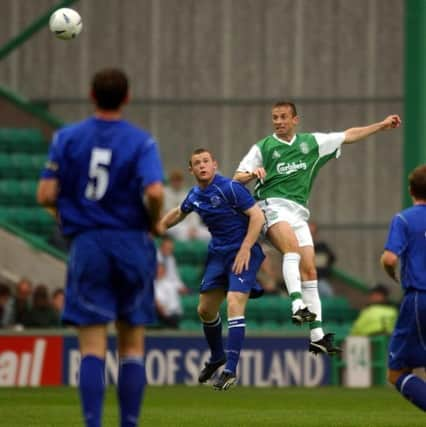Alan Pattullo: Goodison magic just right for Wayne Rooney revival


He also scored at Easter Road on a mini-tour of Scotland when it seemed the then 16-year-old was intent on declaring his genius. After Rooney had struck Everton’s first in a 2-2 draw with Hibs with a header of all things, one Merseyside scribe sitting in the front pew of the press box turned round to say: “This lad’s special, he’s the real deal.”
How many times have we heard that? For once, however, the hype was justified. Just over two years later, we were present again, to see him score another hat-trick – on his debut for Manchester United in the Champions League against Galatasaray after a £27 million move.
Advertisement
Hide AdAdvertisement
Hide AdNo one, not even Sir Alex Ferguson, could have expected to what extent he lived up to the price – a world record for a teenager – and more. Those with 33 minutes to spare can see for themselves via a YouTube compilation featuring the first 250 of the 253 goals he scored for Manchester United while winning everything possible.
Goal No 1 was set up for him by Ruud van Nistelrooy. Rooney seems to belong to another age. Yet he is still only 31. No one is writing off Ronaldo, who is slightly older, nor Lionel Messi for that matter – just a year younger.
When Rooney appeared at Easter Road in July 2002, only weeks after Brazil lifted the World Cup in Japan, he was just months away from scoring the goal that truly announced his arrival; the dipping effort against Arsenal at Goodison Park that soared over David Seaman before clipping the bar and nestling in the net.
Rooney’s celebration that day is imprinted on the memory. There are pictures of him training back with Everton yesterday where he has the same look of wondrous joy on his face. It is the definition of the Scouse phrase “made up”.
He says winning a trophy with Everton at this stage of his career would surpass all else – and you can believe him. Of course, having latterly earned £250,000 a week at Old Trafford, having accrued such a vast sum as a player and even allowing for the betting losses, he can afford to be romantic.
But he could see the value in returning to an arena where he was once adored. It might take a little while to secure a place back in the hearts of all those at the Gwladys Street end, where they still remember him kissing the badge on his shirt after scoring against Everton for United. In fact he made this stinging gesture twice, after a goal in 2007 and again a year later. But Rooney would argue he had to endure strong, often deeply hurtful barracking from scorned Evertonians each time he returned.
The truth is he always loved them. The truth is he slept in Everton pyjamas even when he was skipper of Manchester United, or so he has claimed during an Everton TV interview that was an ingenious way to quickly start burrowing back into the fans’ affections.
In reality, this process began a couple of years ago, when he agreed to play for Everton in Duncan Ferguson’s testimonial against Villarreal. A veteran Merseyside reporter described the afternoon as a “game changer” in the way the Evertonians viewed Rooney, who had broken their hearts more than a decade earlier by agreeing to move to Old Trafford.
Advertisement
Hide AdAdvertisement
Hide AdThe 35,000 crowd that day was not the only proof of Ferguson’s enduring magnetism. The willingness shown by Rooney to put himself back in the firing line again for his old strike partner and boyhood hero was another significant indication.
It was never like that, though. The brickbats ceased. The healing had begun. Instead, his brief cameo instigated the thawing of relations between Everton fans and their one-time golden child. When he replaced Tom Cleverley with 20 minutes left, “Roo-ney, Roo-ney!” was heard at the ground for the first time since 2004.
Rooney’s return to Everton has been rumoured for weeks but that was really the day it became not such a non-starter. No wonder the Everton Twitter feed quickly published a photo of Ferguson, now a first-team coach, welcoming Rooney back to the club. The Scot, after all, had performed the role of chief negotiator.
When Ferguson asks you to do something, you do it. But Rooney’s return is not just about local ties, identity and a sense of duty.
Yes, there’s a sense of unfinished business. Rooney was at Wembley as a wide-eyed nine-year-old when Everton last won a major honour with an FA Cup win over Manchester United in 1995.
But he also needs to reset his career. If there is a place to re-connect with the dynamic Rooney of old, somewhere that can stoke his old fire, summon up the old possibilities, it is Goodison Park.
Perhaps more so than any other football ground in the land, it is a ground that retains a special magic.
For all he might divide opinion, for all the idiocy and very human foibles, Rooney remains an essentially lovable footballer. It feels very easy to wish him well.